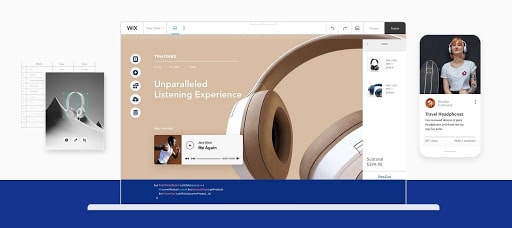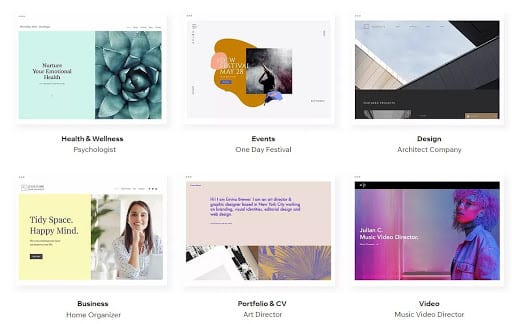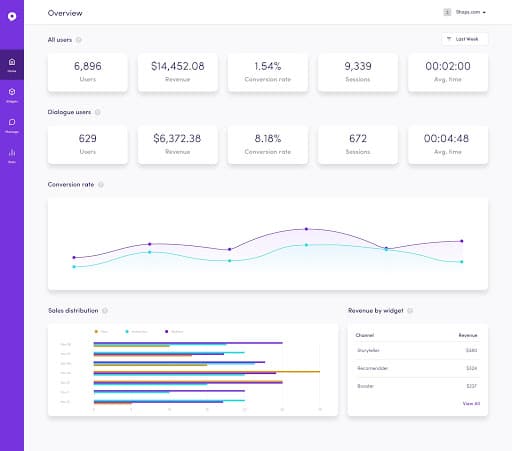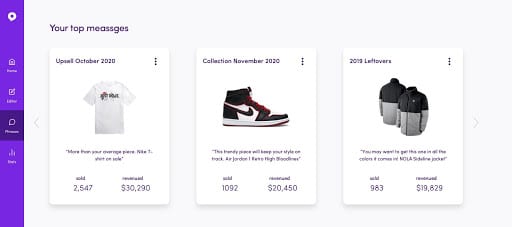
5 Essentials of User Experience (UX) for Ecommerce
Providing a great user experience in your ecommerce shop is the ultimate win-win. It delights your customers, making shopping enjoyable and easy. That creates more sales for you, helping to grow your shop.
User experience matters. A smoother path to checkout means more sales for your shop. Let’s learn five essential strategies you can use to improve your ecommerce user experience.
Quick Takeaways:
- Your ecommerce site’s accessibility is everything.
- Have a multi-platform strategy right from the beginning.
- It pays to tailor your website’s experience as per your visitors.
- With an increasingly lower attention span of users, your website’s speed is everything.
- Data says that offering support via email and live chats increases ecommerce conversions.
Make Your Site Accessible
In the competitive world of ecommerce, you can’t afford to lose 20% of your page views. Yet, if your site isn’t accessible, then this is exactly what’s happening. According to Akea, nearly a fifth of the population faces disabilities, making everyday tasks challenging.
So, what does it mean to be accessible? Here are a few examples of how to accommodate more users:
- Screen-reading software helps those with visual impairments experience your content. You can help that software by providing cues like alt-text and captions.
- Color blindness impacts users in a variety of ways and makes it hard to scan and read your content. Implementing higher contrast color schemes built for this in mind is helpful.
- If your ecommerce shop includes many audio or video clips, make sure to add subtitles and captions.
Your business can’t afford to be inaccessible. Not only will you lose page views and sales, but you also run the risk of litigation. In 2019, over 10,000 companies were sued in the United States alone. That’s increasing every year.
The best solution, if you’re hosted on WordPress, is to plug into a tool like accessiBe. Instead of rewriting your site and checking it page-by-page for accessibility, this tool automates the work. It also ensures that your site is always up-to-date with accessibility compliance.
Accessibility isn’t just the right thing to do: it also helps your ecommerce shop. You’ll include more potential customers, grow your sales, and stay compliant.
Optimize For Every Platform
Will your ecommerce shop be viewed on smartphones, laptops, desktops, or tablets? The answer is “yes, all of the above.” It’s not enough to build a single-device experience. Instead, your site needs to be fully responsive for the best user experience.
Unfortunately, too many marketplaces assume how their shoppers will see the site. They focus all of their design efforts on a single experience.
- At a bare minimum, your ecommerce shop should work on computers, mobile phones, and tablets. Too many shops have desktop-only views that require zooming in and out on mobile to see the content properly.
- Create well-labeled forms. This helps your user’s device autofill them with the information they typically have saved to the device.
- Make it easy to sign in on mobile, such as sending a “no password” login link to reduce the friction of signing into the user’s account.
Ecommerce site builders like Wix go a long way to helping you accommodate every device with no extra programming. The best ecommerce themes are built “responsive” so that they respond to the specific device. That changes the layout and view so that you make the most of the limited screen space.

The platform supports an array of pre-made templates with great functionalities and allows merchants to set up their stores quickly and seamlessly.

Don’t forget: analytics are your friend. Leading ecommerce platforms (or Google Analytics added on top) will capture device statistics. While you should try to accommodate all devices, it also makes sense to focus more effort on leading devices.
Tailor The Experience To Your Visitors
Who wants a “one-size-fits-all” experience as a consumer? The truth is that we don’t want to all be treated equally in our online shopping.
A better consumer experience is to tailor your shop to the visitor. Part of this is what we’ve already covered, responding to the device specifics. The next level is to use what you know about the user to tailor the content.
- Let your users play a part in their experience by adding a “save product” option. They’ll appreciate returning to the shop later to review a product they saved on mobile for research.
- Use technology like tracking pixels and cookies to target and re-target your audience. With these tools, you can show your audience the best content for them based on their history.
- Add a digital rewards program. As the old saying goes, it’s always easier to retain a customer than it is to go and find a new one. A rewards program helps ensure that your current customers become repeat customers.
While it’s impossible to create an individual site for each visitor, you can leverage the power of AI to tailor your site.
Use an ecommerce personalization tool like Dialogue AI to harness AI with user data to show highly tailored content and product recommendations. This is the best way to improve the customer journey of your ecommerce site, leading to overall more successful and customized journeys that increase the likelihood of a sale.

Dialogue has employed a machine learning algorithm that continuously discards less successful customer journeys and perfects ones that were successful.

Losing too many potential buyers during the checkout? It might be time to implement an abandoned cart reminder. This is a helpful feature that sends a reminder or follow-up offers to shoppers who left their site before completing a sale.
The key to differentiating your ecommerce shop is to personalize it. Use these techniques so that you don’t feel like a faceless brick-and-mortar experience.
Speed Up Your Site
There’s nothing worse than waiting for pages to load while you’re browsing for the perfect product. Your customers feel the same way, and it’s one of the most common reasons that your audience will jump to another site.
Speed is so much more than the page load times. Here are two ways that you can optimize the purchase process and keep your shoppers moving efficiently through the sales funnel:
- Use device-specific features. Users with Apple Pay and Google Pay Send have the easiest possible checkout, so make sure you support these features. It takes fewer taps and clicks, saving your users time to make more sales.
- Speed up your page loads. Above all, make sure that your site isn’t slow! Hosted platforms like Wix solve this for you, but if you’re self-hosted (like using WooCommerce) then tack on a CDN to speed up your shop.
Speed kills. A sluggish ecommerce site is bound to lose shoppers to the competition, so implement these options so that your site doesn’t lag behind the competition.
Offer Live Chat (And Other Support Options)
Sometimes, a single question is all that stands in the way of converting a visitor into a purchaser. How do you resolve that before you lose the sale to another site?
The answer is clear: you have to support your guests by offering options like chat and email. According to a survey by Forrester, 44% of respondents said that having questions answered by a person led to making more sales.
Part of the reason that brick-and-mortar shipping still has a foothold is due to the personal service that many customers need. But, you can bridge this gap by adding live chat (and even video chat!) with tools like Podium.
Make Your Ecommerce Shop Easy-To-Use Today
It’s the small touches that set your shop apart. In the world of Amazon and unlimited competition with other shops, you have to provide a smooth experience.
In this article, you saw five strategies and countless tactics to improve your user’s experience. User experience makes it more fun for your users to shop and helps your site grow. Start using them today to take your shop to the next level.
Help your e-commerce store get found. Our custom Content Builder Services involve industry expert strategists and down-to-earth writers. Take a hands-off approach to content without sacrificing quality.






